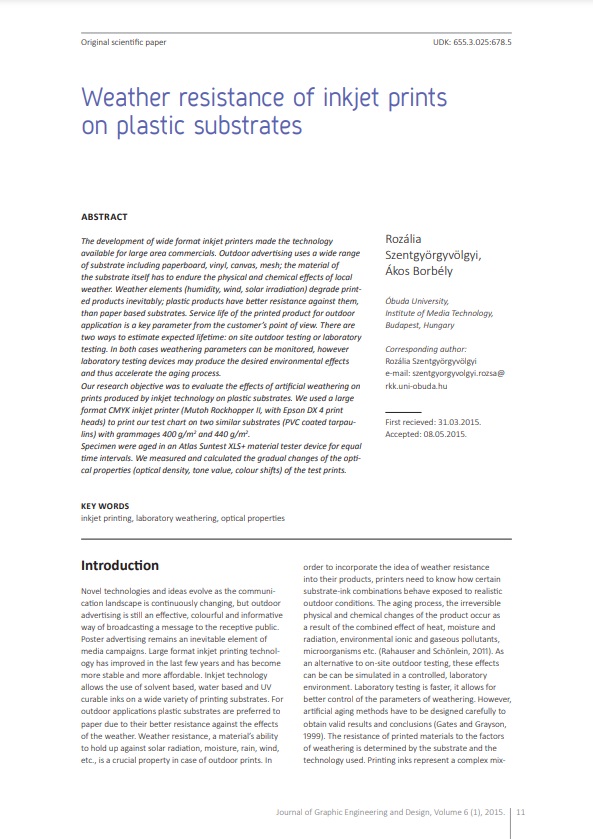
Published 2023-09-30
abstract views: 260 // Full text article (PDF): 212
Keywords
- inkjet printing,
- laboratory weathering,
- optical properties
How to Cite
Copyright (c) 2015 © 2015 Authors. Published by the University of Novi Sad, Faculty of Technical Sciences, Department of Graphic Engineering and Design. This article is an open access article distributed under the terms and conditions of the Creative Commons Attribution license 3.0 Serbia.

This work is licensed under a Creative Commons Attribution 3.0 Unported License.
Abstract
-
The development of wide format inkjet printers made the technology available for large area commercials. Outdoor advertising uses a wide range of substrate including paperboard, vinyl, canvas, mesh; the material of the substrate itself has to endure the physical and chemical effects of local weather. Weather elements (humidity, wind, solar irradiation) degrade printed products inevitably; plastic products have better resistance against them, than paper based substrates. Service life of the printed product for outdoor application is a key parameter from the customer’s point of view. There are two ways to estimate expected lifetime: on site outdoor testing or laboratory testing. In both cases weathering parameters can be monitored, however laboratory testing devices may produce the desired environmental effects and thus accelerate the aging process. Our research objective was to evaluate the effects of artificial weathering on prints produced by inkjet technology on plastic substrates. We used a large format CMYK inkjet printer (Mutoh Rockhopper II, with Epson DX 4 print heads) to print our test chart on two similar substrates (PVC coated tarpaulins) with grammages 400 g/m2 and 440 g/m2. Specimen were aged in an Atlas Suntest XLS+ material tester device for equal time intervals. We measured and calculated the gradual changes of the optical properties (optical density, tone value, colour shifts) of the test prints.

